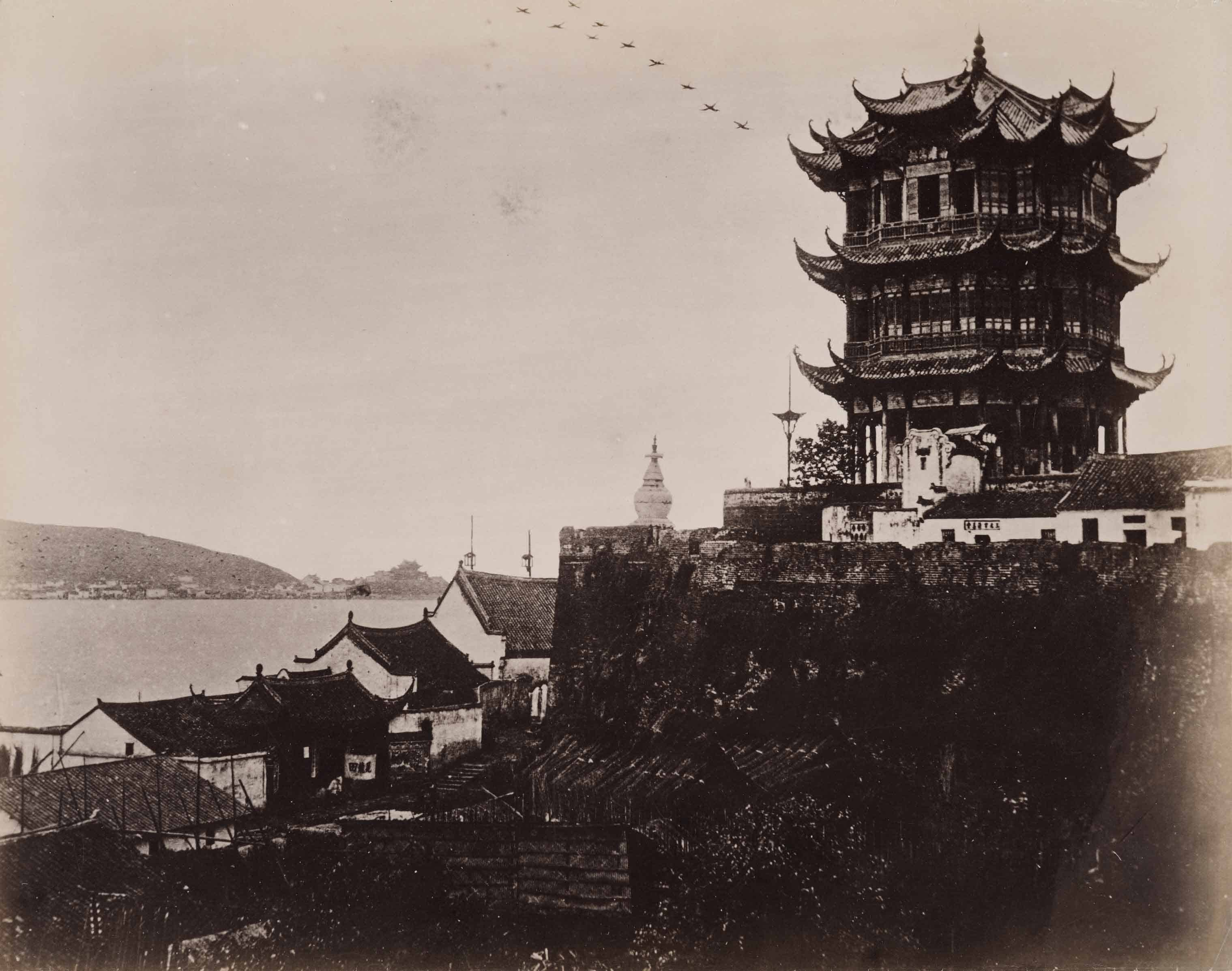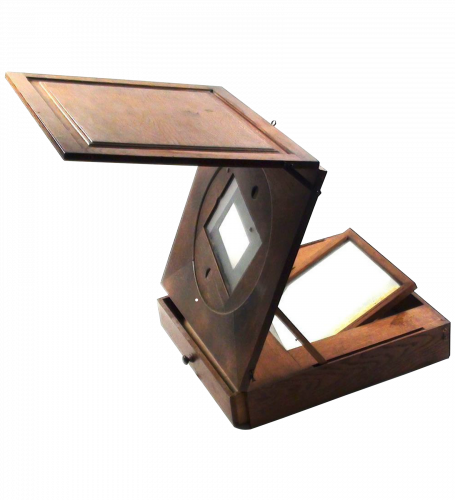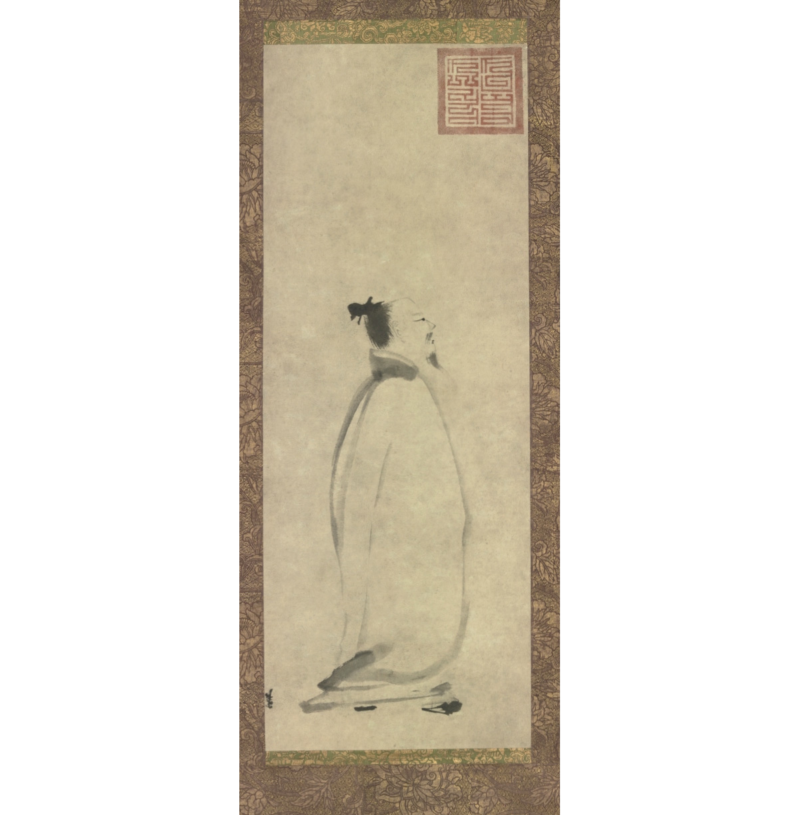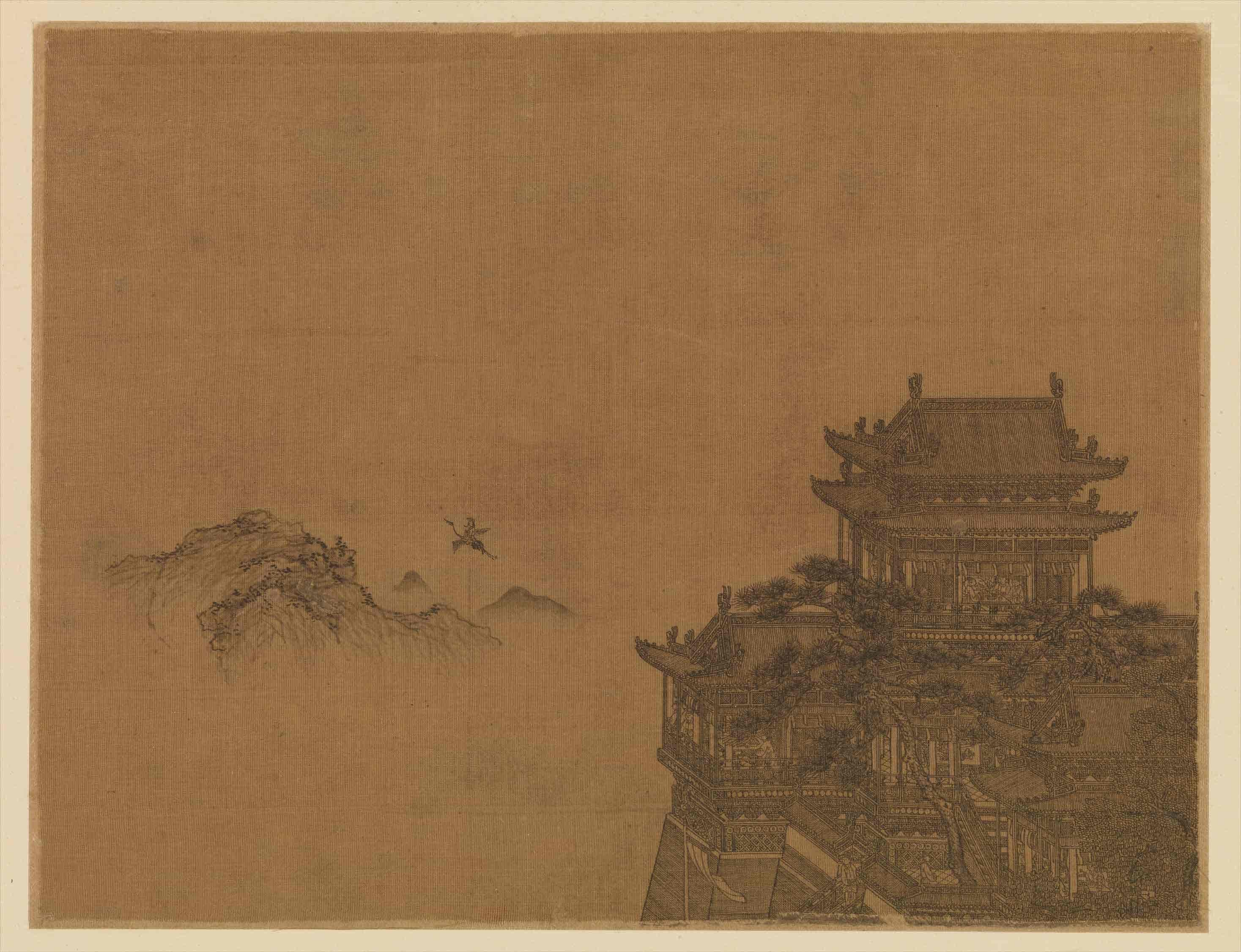

Pow Kee Photographers Studio
1870s
Albumen silver print
21 x 29 cm
From the Loewentheil Collection
宝记照相
1870年代
蛋白印相
21 x 29 厘米
洛文希尔收藏
The Pow Kee photograph of Huanghe Lou Pagoda in the Loewentheil Collection is unique. An artist etched cranes into the sky of the early negative to reflect the legends surrounding the famous pagoda. This is the only known example of the photograph with cranes in flight.
Since the earliest days of photography, artists have used manual retouching in the negative, also known as “handwork,” to enhance the art of the photograph and add meaning. Today changes to a photograph are made on a computer, but in the nineteenth century alterations took place on the negative. In Pow Kee’s photograph the artists added small cranes to the sky working on the emulsion side of the negative. Detailed work in a negative, referred to as ‘etching,’ was a delicate practice only accomplished by experienced retouching artists who often worked on retouching desks. The intricate work might involve scraping glass plates or paper negatives with knife similar to surgeon’s scalpel, and painting or drawing on the negatives. Sometimes multiple negatives were combined to make composite negatives showing clouds to create atmosphere.

Nineteenth-century artist’s photographic negative drawing, painting, and etching desk.
The Loewenetheil Collection has large holdings of photographs by the Pow Kee Photography Studio. The studio created photographs that appealed to members of the scholar gentry and the works reflect important aesthetic elements that originate in Chinese painting. Pow Kee Photography Studio was an early photography studio operating in Wuchang. Its founder, Ouyang Shizhi, was from Guangzhou, which is most likely where the studio originated. A sign for the Pow Kee Photography Studio appears in this photograph on one of the buildings to the right of the pagoda.
The Huanghe Lou Pagoda seen in Pow Kee Photographers Studio’s photograph stands at the confluence of the Yangtze and Han rivers. It was built during the Three Kingdoms period in 223 AD as a military watchtower. Poems by two renowned poets made the tower famous during the Tang Dynasty: Li Bai’s “Seeing off Meng Haoran for Guangling at Yellow Crane” Tower and Cui Hao’s “The Yellow Crane Tower.” The Huanghe Pagoda in Pow Kee Photographers Studio’s photograph burned down in 1884. One hundred years later it was rebuilt one kilometer away from the river. The tower is one of the Four Great Towers in China.
Artist’s Tools for Etching, Painting, and Drawing on a Glass Plate Negative

Pow Kee’s Photograph Expresses the Legend of the Yellow Crane Tower
Pow Kee Studio was aware of the numerous legends surrounding the Yellow Crane Tower. According to the most famous story, an immortal disguised as a poor Taoist monk wandered into a local wine shop. The owner warmly welcomed the monk and offered him free wine for several years. In gratitude the monk drew a crane on the wall. When the shop owner clapped his hands, the crane came to life and began to dance. The dancing crane attracted great crowds to the wine shop making the shop owner and his family extremely wealthy. A decade later the immortal returned to the wine shop and played a flute summoning the crane from the wall. He mounted the crane and flew off into the distance. It is said that the shop owner built the Yellow Crane Tower to commemorate the immortal being and the crane.
Photographs by the Pow Kee Studio demonstrate the artist’s interest in art and literature. Poets and artists have long travelled to the Yellow Crane Tower for inspiration.
Cui Hao’s famous poem about the tower is one of the greatest works in the Chinese poetic canon.
“Yellow Crane Tower” (黃鶴樓).
昔人已乘黃鶴去, 此地空餘黃鶴樓。
黃鶴一去不復返, 白雲千載空悠悠。
晴川歷歷漢陽樹, 芳草萋萋鸚鵡洲。
日暮鄉關何處是, 煙波江上使人愁。
Long ago one’s gone riding the yellow crane, all that remained is the Yellow Crane Tower.
Once the yellow crane left it will never return, for one thousand years the clouds wandered carelessly.
The clear river reflects each Hanyang tree, fragrant grasses lushly grow on Parrot Island. At sunset, which direction leads to my hometown? One could not help feeling melancholy along the misty river.

This Pow Kee’s photograph is the only known print that includes the etched cranes, honoring the tower’s poetic legacy.
Poem by Li Bai

There are other famous poems about the Yellow Crane Tower by Li Bai. One was written on the occasion of Li Bai parting with his friend and poetic colleague, Meng Haoran. The poem is titled "Seeing off Meng Haoran for Guangling at Yellow Crane Tower" (黃鶴樓送孟浩然之廣陵), and is shown in its original form below:
故人西辭黃鶴樓,
煙花三月下揚州。
孤帆遠影碧空盡,
唯見長江天際流。
A modern English translation is:
My old friend bids me goodbye,
To Yangzhou in the mists and flowers month of spring he goes,
His single sails far shadow melts in the blue void,
All I see is the sky to which the Yangtze flows.

元 夏永 黃樓圖 冊頁
The Yellow Pavilion
Xia Yong (Chinese, active mid-14th century)
Yuan dynasty (1271–1368)
ca. 1350
Album leaf; ink on silk
The Metropolitan Museum of Art Ex coll.: C. C. Wang Family, From the P. Y. and Kinmay W. Tang Family Collection, Gift of Oscar L. Tang, 1991
For permissions and inquiries please contact:
446 Kent Avenue PH-A Brooklyn, NY 11249 USA